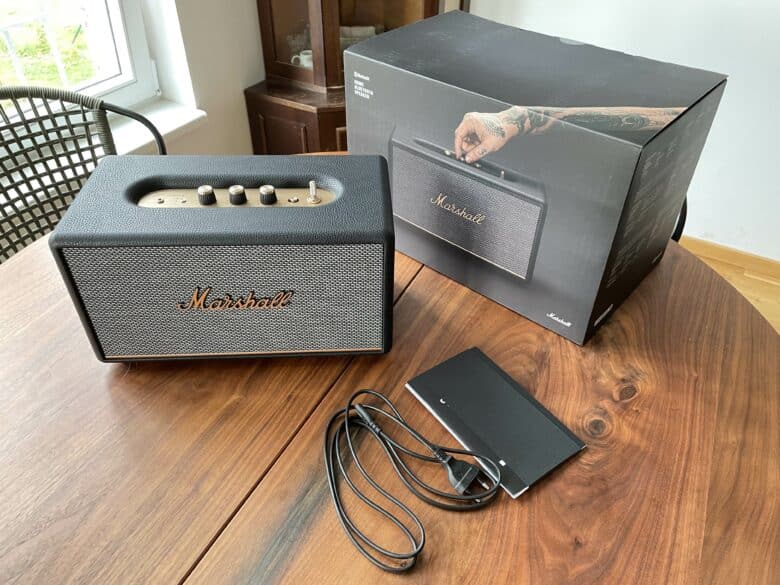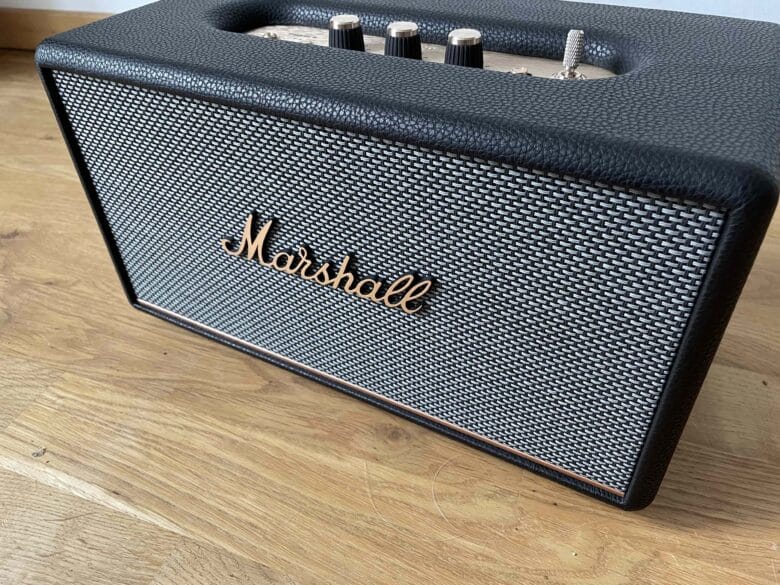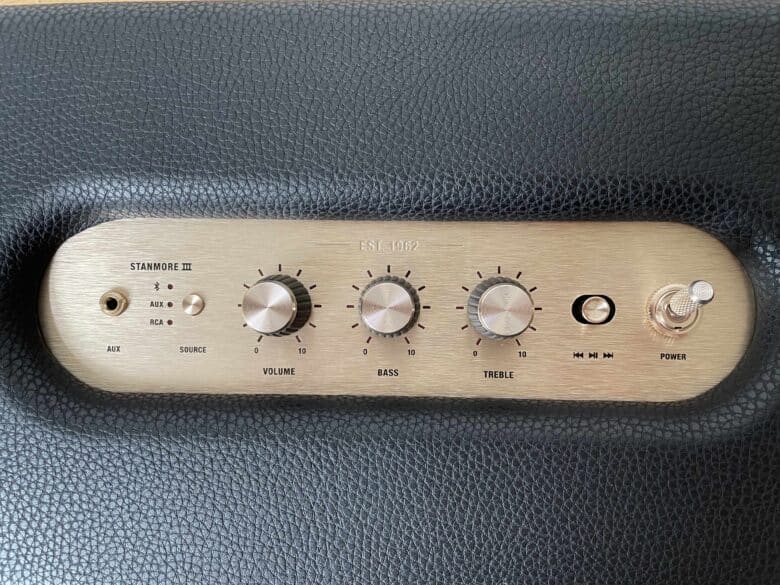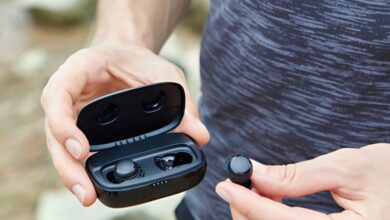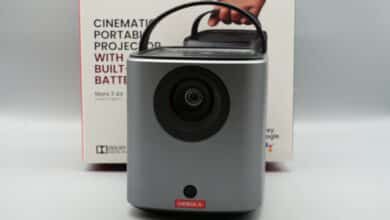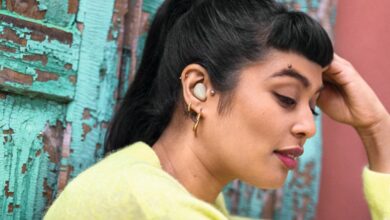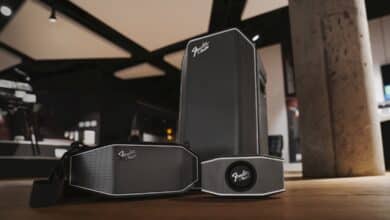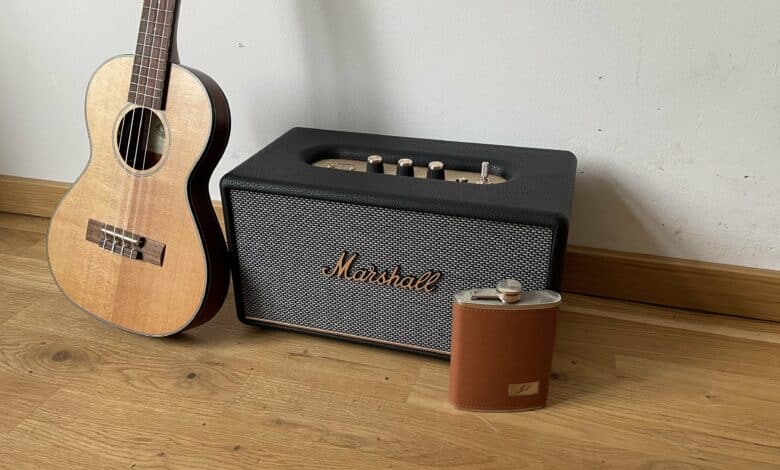
The popular speaker series, which Marshall manufactures in cooperation with the Swedish company Zound Industries, goes into the next round in 2022. Thus, the popular Marshall Stanmore also gets its now third generation. With an MSRP of 369.00 euros, the Marshall Stanmore III is pretty much in the middle of the pack in terms of speaker lineup in amplifier optics. This doesn’t just apply to the price, by the way. It also ranks perfectly in the middle of the Marshall speakers in terms of size and performance. How good the speaker is in practice, you can read in our Marshall Stanmore III test.
Technical details
| Frequency range | 45-20,000 Hz |
| Adjustable bass and treble control | Tune your music to your preferences with your speaker’s analog controls |
| Stereo/Mono | Stereo |
| Maximum sound pressure level | 97 dB @ 1 m |
| Enclosure system | Bass reflex |
| Amplifier | 1x 50-watt class D amplifier for the bass speaker, 2x 15-watt class D amplifier for the tweeters |
| Performance | Input voltage: 100-240 Mains frequency: 50 – 60 Hz |
| Connectivity | Bluetooth 5.2 3.5 mm jack connector RCA input |
| Control | Marshall Bluetooth app or top panel controls |
| Dimensions and weight | 350 x 203 x 188 mm and 4.25 kg |
| Colors | Black, Cream, Brown |
| App | Marshall Bluetooth app |
| Price | € 294.99 * |
Marshall Stanmore III review: mini guitar amp
- Vintage look of the Marshall series
- High build quality
- Colors: black, cream, brown
The chic Stanmore III is currently still available in black or cream. From autumn of this year, a version in brown should also go to the start. Visually, it follows the same basic concept as the rest of Marshall’s speakers. Thus, it also comes in a noble vintage look, reminiscent of the classic guitar amplifiers of the British traditional company. With dimensions of 350 x 203 x 188 mm, it differs a bit from its predecessor. On the other hand, its weight, which at 4.25 kg is much lighter than its predecessor, makes it a little easier to move from A to B.
The speaker is definitely not portable. But it doesn’t even want to be that. In view of a missing battery, you’ll have to opt for a fixed location with an available power socket anyway. Once you have found this place, the retro design ensures that the Stanmore III also becomes a real decorative piece in your own four walls. Not only the casing in a pretty leather look is chic. The fabric grille at the front is reminiscent of noble tweed fabric. The whole thing is rounded off with pretty accents of bronze-colored aluminum.
Marshall Stanmore III review: comprehensive control panel
- Treble and bass control possible on the device itself
- Wireless connection via Bluetooth 5.2
- Cable connection via 3.5mm jack or RCA input
On the top of the Marshall Stanmore III is the control unit of the speaker. Here you can not only adjust the volume of the speaker. You can also increase or minimize the bass and treble here. In addition to the knobs, you’ll also find the power switch and a play/pause button here. The latter has been expanded by a new function in the Stanmore III.
So now you can also jump to the next or previous track here. With the help of the audio source button, you can switch back and forth between Bluetooth, Aux or RCA. The suitable inputs for classic cable sources can be found in the form of a 3.5 mm jack on the top and an RCA input on the back.
The back of the speaker is far less attractive, as it was primarily covered with warning labels and manufacturer information. However, since the speaker shouldn’t stand freely in the room anyway, but against a wall, this should bother the very few. However, it certainly serves practical purposes. In addition to the already mentioned RCA input, there is also the connection for the power cord here.
To allow air to escape from the device during music playback, there is also a corresponding opening on the back. All in all, the manufacturer once again delivers the usual high quality in terms of design and workmanship with the Stanmore III. Those who like the classic Marshall look will also be able to enjoy the third generation of the speaker.
Marshall Stanmore III: Marshall Bluetooth app
The in-house Marshall Bluetooth app, which is available for both iOS and Android, must of course not be missing from the Stanmore III. It not only regularly provides your speaker with the latest firmware update. On top of that, you can also use user-defined EQ presets here. The big advantage compared to the small Marshall speakers Emberton II (test) or Willen (test) is the customizability. So you don’t have to rely on the default settings here. Alternatively, you can let off steam yourself and create your very own sound image in the equalizer.
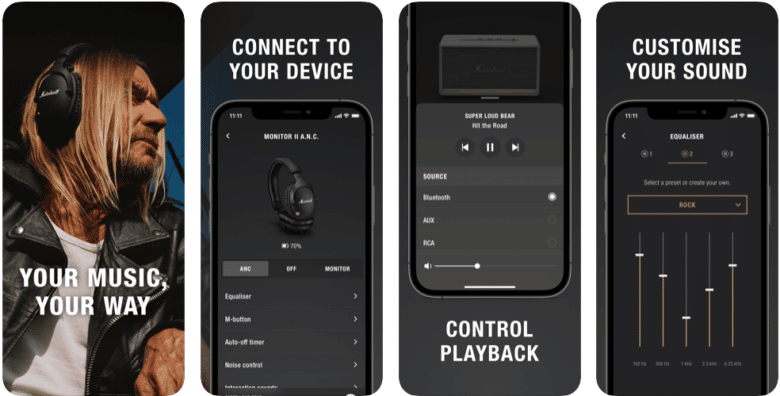
In addition, there are a few other small settings options. For example, you can adjust the brightness of the red LEDs and turn audio announcements on or off. Something has also changed in terms of connectivity. The Marshall Stanmore III connects to your smartphone easily and quickly thanks to the latest Bluetooth 5.2. There were no connection interruptions in the test, which is probably also due to the very good range of ten meters.
Marshall Stanmore III test: sound performance
- 1x 50 watt amplifier for bass speakers
- 2x 15 watt amplifier for tweeters
- very good bass and treble
- grandiose mids
- weakens in deep bass regions at maximum volume
Let’s move on to the supreme discipline – the sound. Thanks to the settings options on the stereo speaker itself and in the app, you can adjust the sound to your liking. At least within the limits set by the 50-watt amplifier in the bass speaker and the two 15-watt amplifiers of the two tweeters. I left the speaker on neutral settings. This is more or less in line with the classic Marshall sound, which puts a lot of emphasis on mids. To get an overall picture, I listened to different genres in the sound test.
Electronic
With electronic music, the Stanmore III could score with amazingly powerful bass. However, it does not keep up this great performance at the latest when you push the volume once. In this case, I experienced audible distortions that resulted from the overlapping of too deep sub-basses and trebles. However, it should be said that you have to turn up the speaker quite a bit before the distortions occur. So, this should really only be noticed by those who regulate the volume control of the Stanmore III to almost maximum.
Rock and Folk
Moving on to a genre that Marshall probably understands better than almost anyone else – guitar music. Here, the Stanmore III is confronted with less deep bass, which on the whole made for a cleaner sound. If you turn up the volume to the highest level here, you won’t hear any distortions in contrast to bass-heavy music. The speaker plays especially acoustic and electronically amplified guitars excellently and accurately.
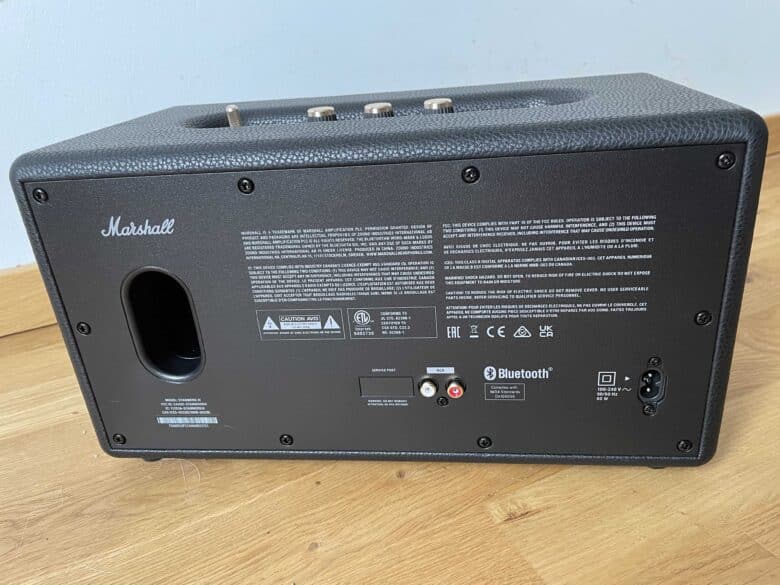
This highlights the parade discipline of all the speakers in the Marshall lineup. After all, they are simply beyond reproach when it comes to accurate and clean mids. Not only guitar music, but also low and mid-range vocals are a real treat. With drums, on the other hand, you get a healthy, robust presence in the lows. Here Marshall finds the perfect middle ground.
Hip Hop
Next, we took a look, or rather an ear, at a couple of hip hop tracks. And here, too, the Stanmore III delivers a great performance. The chanting is reproduced cleanly and clearly, and the bass comes in powerful and purposeful. Thus, you get the beat thrown around your ears with proper power. In contrast to the electronic genre, the Stanmore III is not overstrained at any time, even in high volume regions. It can be concluded that the manufacturer has clearly focused on bass and low mids. The sub-bass in low frequency regions are obviously a bit too deep for the Stanmore III with its frequency response of 45 to 20,000 Hz. Thanks to clean bass and clear vocal reproduction, the Stanmore III is thus also ideally suited for hip hop.
Classical
A real bank represents the Marshall Stanmore III also in the field of classical music. Especially orchestral music sounds simply terrific on the Bluetooth speaker. Here, especially the range of the lower mids comes to the fore again. Low instruments like a bassoon sometimes give you goosebumps. However, this takes place within a balanced framework, which is why the other instruments like brass, strings and vocals are by no means overdubbed. These also come along ideally balanced and convince in the area of mids and trebles. In the field of classical music, the Stanmore III proves that it scores especially when the bass is left as little room as possible.
Marshall Stanmore III test: wide soundstage
- Tweeter position adjusted compared to its predecessor
- offers wide soundstage
The sound quality at the Marshall Stanmore III thus gives little cause for complaint. Only people who like to listen to very loud electronic music should perhaps look for a competitor product. However, this has never been the strength of the Marshall speakers. By the way, you can hear a difference to the previous generation when listening closely. For example, the manufacturer has now angled the tweeters outward, similar to the Marshall Acton III (test). This results in an amazingly wide soundstage, which is why even larger rooms can be very well sounded with the speaker.
Marshall Stanmore III review: conclusion
You’re into vintage looks and rock music? Then you are well advised with the Marshall Stanmore III. Even in the third generation of the chic Bluetooth speaker, it scores not only with a pretty look and great workmanship. Thanks to Bluetooth 5.2, it is now also technically up to date. And the sound? The Marshall Stanmore III can score in every genre in sound tests. Unfortunately, the drivers distort on some tracks with strong sub-bass when you turn up the volume a bit too much. However, since you have to turn the volume control almost all the way up, you’ll rarely notice any of this.
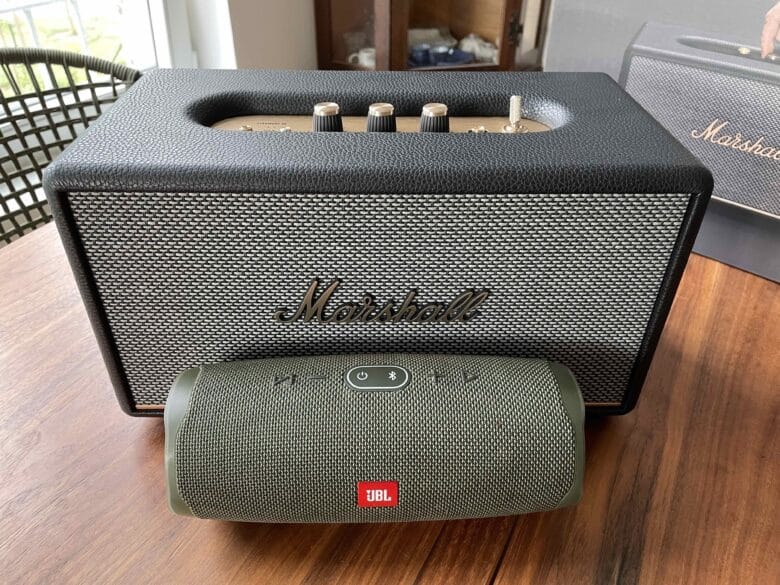
In terms of user comfort, the manufacturer also delivers. Not only can you make settings via the handy Marshall Bluetooth app. You can also adjust the sound to your liking on the speaker itself. In my eyes, the only real criticism of the Marshall Stanmore III is the high price. For 369.00 Euros, you can get speakers from the competition that are not only a bit better in terms of sound. On top of that, many other representatives offer practical Wi-Fi features like Spotify Connect or AirPlay. If you don’t measure that and if the mini-amplifier look is worth the high price, you’re golden here.
Marshall Stanmore III
Workmanship
Usability
Sound quality
Features
Value for money
90/100
The Marshall Stanmore III is a really chic Bluetooth speaker that also sounds great. If only it weren't for the high price.



